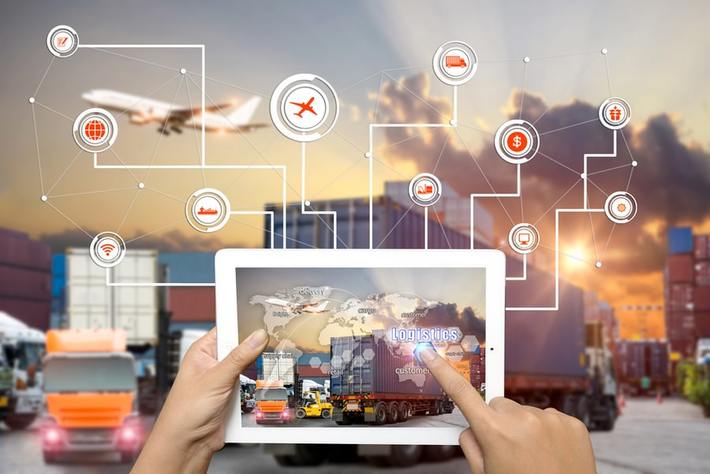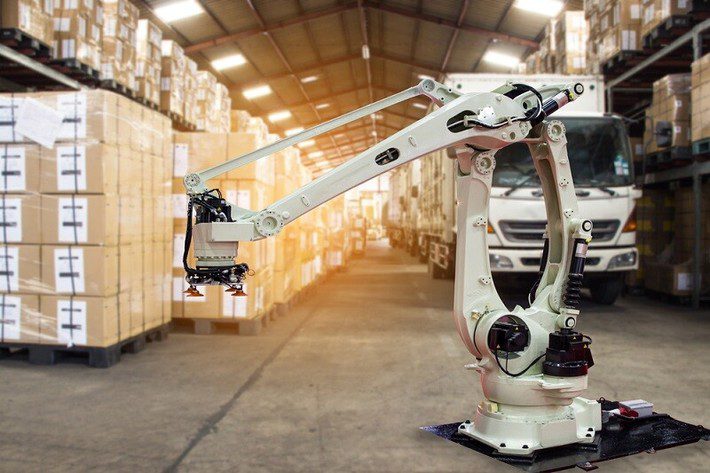
With globalization, everything became more digital, people started to buy more online and want their products or services to be delivered faster and cheaper. In such a fast world, logistics and supply chain have to keep pace with rapidly changing customers’ needs. According to ML news, supply chains lose hours every day on paperwork, which results in more than $170,000 a year. One of the ways to make the situation better is to use artificial intelligence for some of the tasks. Transferring some manual tasks to the machine can resolve the problem with human-based paperwork as well as improve productivity. So, in this article, we will review the top 5 areas where AI can make logistics and supply chain management better.
5 Ways AI Is Impacting Logistics and Supply Chain Management
Artificial intelligence has brought about huge changes in logistics and supply chain companies. Here are 5 ways of how AI-driven technologies impact companies by driving improvements and innovations in their logistics and supply chain operations.
Predictive analysis
Efficient performance, timely delivery and reducing transportation costs are essential for any logistics company. To achieve this, it is important to carry out an in-depth analysis based on historical data to identify patterns for risks, take corrective actions and make forecasts. Only by using a predictive analysis you can vastly improve the logistics processes, adjust shipping patterns, provide on-time delivery as well as predict customers’ behavior. This technology is becoming more and more popular, according to the 2020 MHI Annual Industry Report, the number of logistics companies using predictive analysis grew from 17% in 2017, to 30% in 2019. Not only does it help you enhance supply chain visibility, optimize routes and make it easier to track and plan shipments, but it also can detect unexpected conditions and risks. If implemented correctly, it will significantly reduce the operational costs and help companies make more informed decisions.
Robotics

Robotics means the usage of smart machines in the process of supply management. According to Statista report, the logistics service robotics sales will amount to more than 6 billion U.S. dollars in 2021. Generally, robots can perform mundane tasks including delivery, transportation, warehousing, picking, packing and routing. The main difference between traditional industrial robots and AI-enhanced is that the last ones can perform more complex tasks without the necessity of human control. Moreover, smart robots can evolve by learning new types of tasks and performing more and more complex actions. It means that this machinery can partly and in particular cases fully replace the human, making the process of delivery more predictable, easy to control and more effective. For example, drones can deliver a particular amount of weight and can either fly or move by ground or water. Radio-frequency identification (RFID) systems can automatically sort, locate and deliver packages through the warehouse. So, the use of robotics in logistics can increase productivity alongside make it easier for humans to control the different stages of delivery.
Computer vision
Every vision technology consists of two main blocks: the camera and the “brain” computer which makes all work. It can recognize objects, products, specific actions, color and take actions based on the complex algorithm. This system can be used for damage detection and productivity improvement within the supply chain. For example, retail giant Amazon uses a computer vision-based AI system to unload a trailer of inventory in only 30 minutes compared to hours without utilizing such systems.
In addition to that, systems powered with computer vision can automatically identify damage – they can locate the source of the damage, its depth and make some actions to prevent cargo from future accidents. Another usage of computer vision is the loading and unloading of goods. Not only does this system automatically recognize goods and packages, but also locate them in appropriate places in the warehouse. Having that in mind, computer vision systems are widely used for preventing customer churn, improving the quality of the supply chain and increasing the safety of the delivery process.
Big Data

Like every other industry, logistics generates a significant amount of various data. Without a well-maintained document management system, it would be more difficult to manage all these data. Collecting data from various sources such as drivers’ apps, devices, systems and evaluating how various factors influence the process of delivery helps companies save budgets and avoid late shipments and deliveries. With big data analytics, you can gain insight into the data of past deliveries, reports from drivers and make improvements. According to the research, more than 91% of fortune 1000 companies are investing in big data. Moreover, AI-driven data analytics allows companies to take into account such changing factors as fleet repair schedules, truck sensors, unfavorable weather conditions and fuel prices. Not only does it provide destination suggestions for drivers and navigate them more efficiently, , but it also allows companies to minimize logistics costs on a route-by-route level.
Autonomous Vehicles
Autonomous vehicles can significantly increase the efficiency of the delivery process. This technology can provide higher reliability, cost efficiency and more predictable results. Even though we still do not receive fully autonomous trucks for delivery, it is a matter of time. Technologies are developing and it is possible to predict that in a short period customers will receive their packages without human participation. According to Mckinsey’s report, autonomous vehicles including drones will deliver close to 80% of all parcels. This technology will increase the efficiency of the delivery process by overcoming transport challenges and delays.
Bottom line
To sum up, AI is revolutionizing the logistics processes by introducing new ways of working with data, improvements in the all supply chain. Such technologies as predictive analysis, robotics, computer vision, big data and autonomous vehicles can vastly increase the efficiency of logistics and supply chain. They can change the approach to managing goods in warehouses, optimizing last-mile deliveries and logistics network. With that in mind, logistics and supply chain companies should take into account these technologies for increasing their productivity and improving bottom line.
